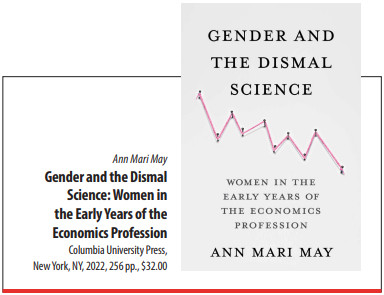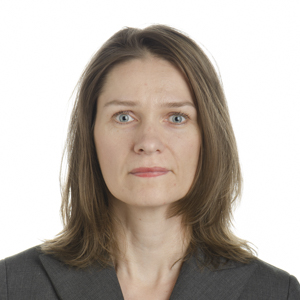GENDER DISCRIMINATION and the associated biases and barriers to career advancement are unwelcome realities for many working women, and the economics profession is no exception. Almost half of the female respondents in a 2019 American Economic Association (AEA) survey said that they had been discriminated against based on their sex, compared with just 3 percent of male respondents, and male students in US economics PhD programs outnumber female students 2 to 1. These statistics paint a dismal picture for “dismal scientists.” Ann Mari May’s compelling and well-researched book, Gender and the Dismal Science, offers a rich historical narrative on the long-standing sources of such gender gaps.
Drawing on AEA archives and a wide range of empirical data, May traces the evolution of social norms and institutional barriers, as well as overt exclusion and discrimination in hiring and promotions, publishing, and participation in professional associations. Weaving in the stories of female trailblazers—or, in her terms, “tenacious persisters”—May also incorporates personal perspectives and tales of triumph.
Covering the late 19th century through the post–World War II period in the United States, May delves into the underpinnings and evolution of gender discrimination. With male enrollment in colleges and universities declining during the US Civil War, and more girls than boys graduating from high school, the pressure to allow women to enroll was building. Yet many universities were reluctant to admit women, viewing their presence as a “dangerous experiment” or posing a direct challenge to men’s livelihoods. The first female economics students faced challenges such as segregation in the classroom, unequal access to libraries and laboratories, and doubts about their inherent abilities to complete a rigorous course of study.
Upon completion of their degrees, women seeking employment in the field of economics continued to encounter obstacles and exclusion. May’s exploration of AEA membership data, starting in 1886, shows a vast gap in professional representation: women comprised only 5 percent of AEA membership over the first six decades of the association’s existence. Social norms and views on the incompatibility of marriage with a career as an academic further stymied women’s efforts to contribute fully to the field of economics. Women also struggled to publish in academic journals, and May’s empirical analysis of publications in the American Economic Review and Quarterly Journal of Economics examines the importance of network connections, something women certainly lacked. And throughout the chapters, May carefully considers the importance of intersectionality, offering sobering statistics on how women of color have been marginalized and remain vastly underrepresented in economics.
By the end of the book, May succeeds in pushing the reader to confront the disconnect between a profession that has long examined the harmful effects of monopolies and discrimination and the reality that the profession itself is rife with both. The stories of champions, advocates, and “tenacious persisters” should spur all economists, regardless of gender, to break down glass walls and glass ceilings and aim to diversify a far-too-homogeneous profession.
Opinions expressed in articles and other materials are those of the authors; they do not necessarily reflect IMF policy.










